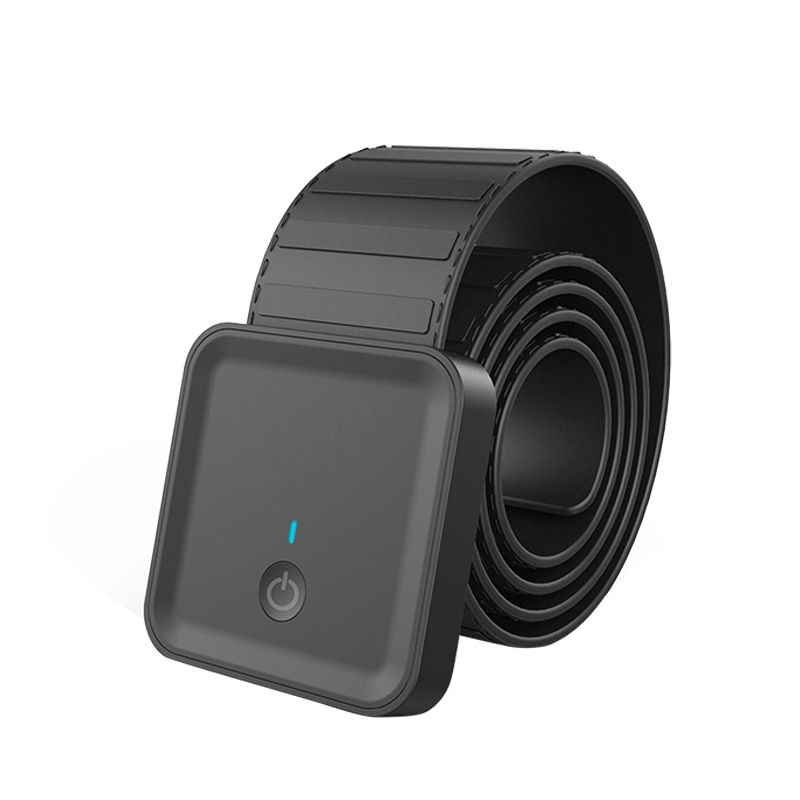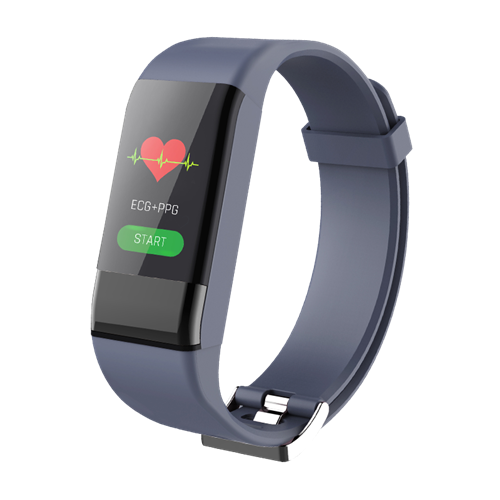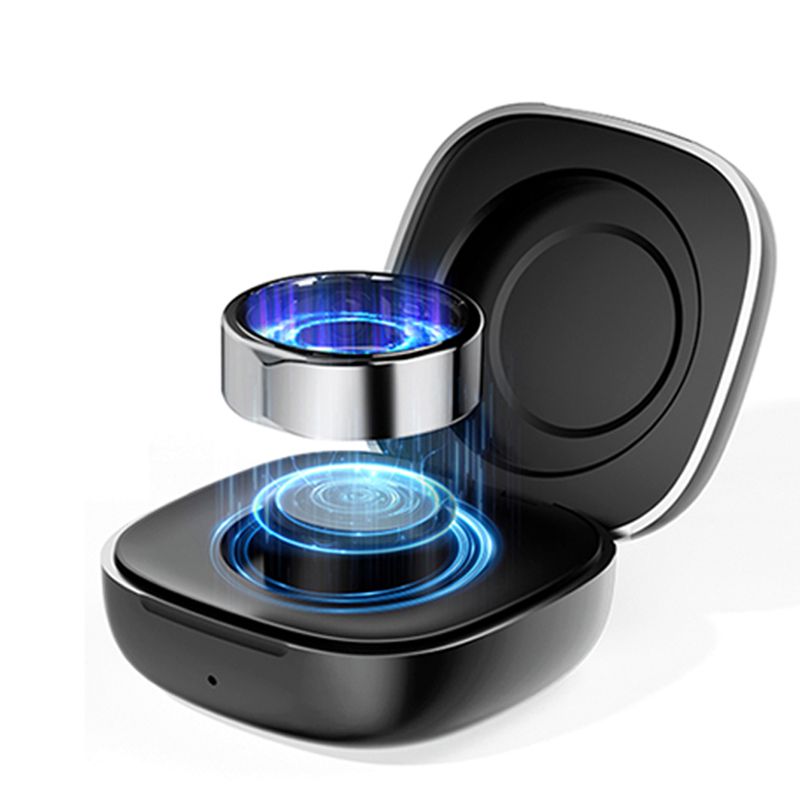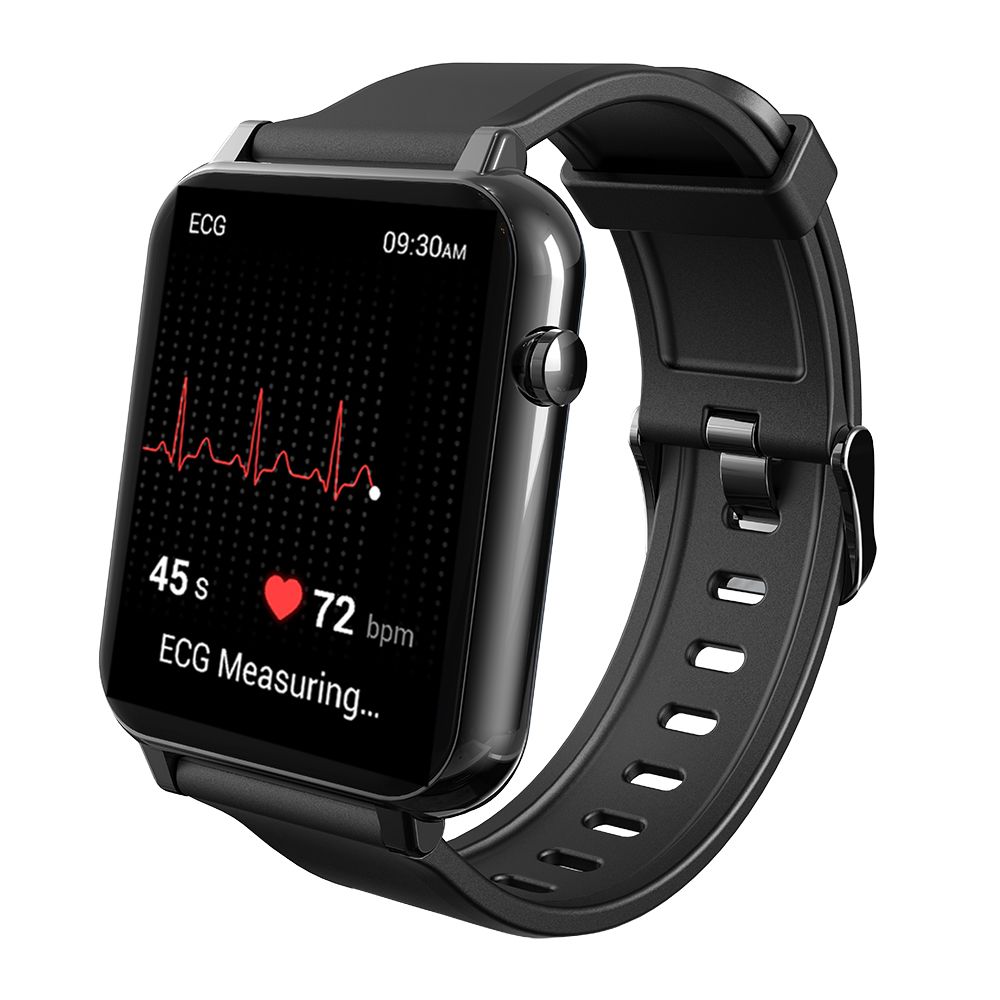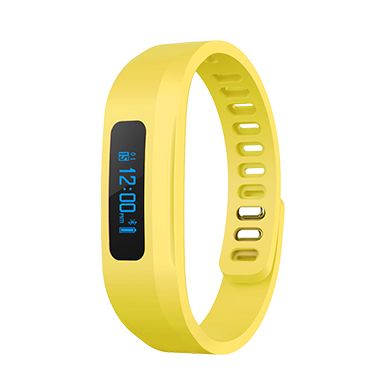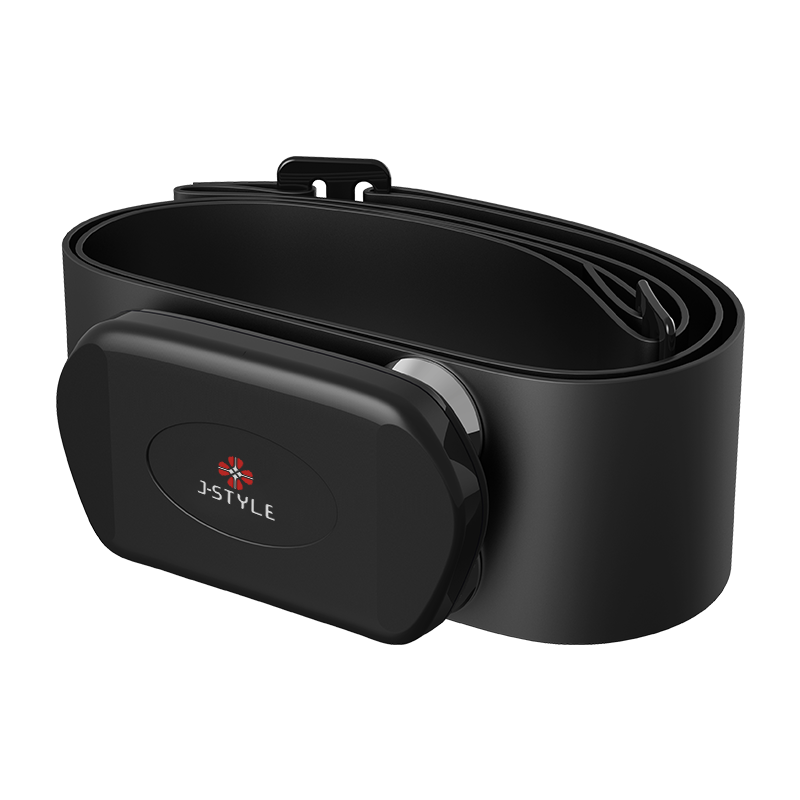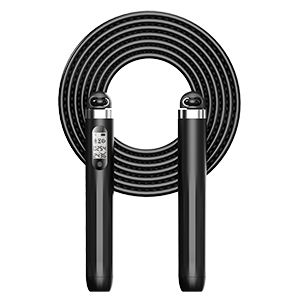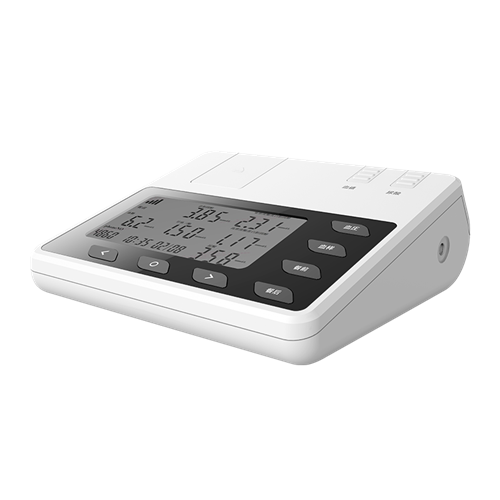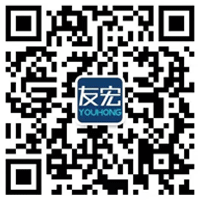How Do Smart Rings Revolutionize Sleep Monitoring And OSA Risk Assessment?
Sleep is the foundation of human health, yet in the modern world, it is increasingly compromised.
According to the World Health Organization (WHO), over 45% of the global population experiences some form of sleep disturbance, ranging from difficulty falling asleep to fragmented sleep patterns. The Centers for Disease Control and Prevention (CDC) has even labeled insufficient sleep as a “public health epidemic,” linking it to increased risks of cardiovascular disease, obesity, diabetes, depression, and reduced life expectancy.
While consumer interest in sleep tracking has grown—fueled by the rise of wearables such as smartwatches and fitness bands—device ergonomics remain a major pain point. Market research from Statista and Sleep Foundation indicates that over 60% of smartwatch users remove their devices before bed, citing issues such as:
● Device weight and bulkiness
● Skin discomfort or “wrist squeeze” sensation during prolonged wear
● Heating from batteries and sensors
● Disruption during side sleeping positions
This leads to gaps in nighttime biometric data, especially in critical parameters such as heart rate variability (HRV), blood oxygen saturation (SpO₂), and breathing patterns. Without these, it becomes difficult to identify early warning signs of serious sleep-related disorders—most notably Obstructive Sleep Apnea (OSA).
OSA is a condition where breathing repeatedly stops and starts during sleep due to throat muscle relaxation, causing oxygen levels to drop. If undetected, OSA increases the risk of stroke, heart attack, metabolic syndrome, and even sudden cardiac death.
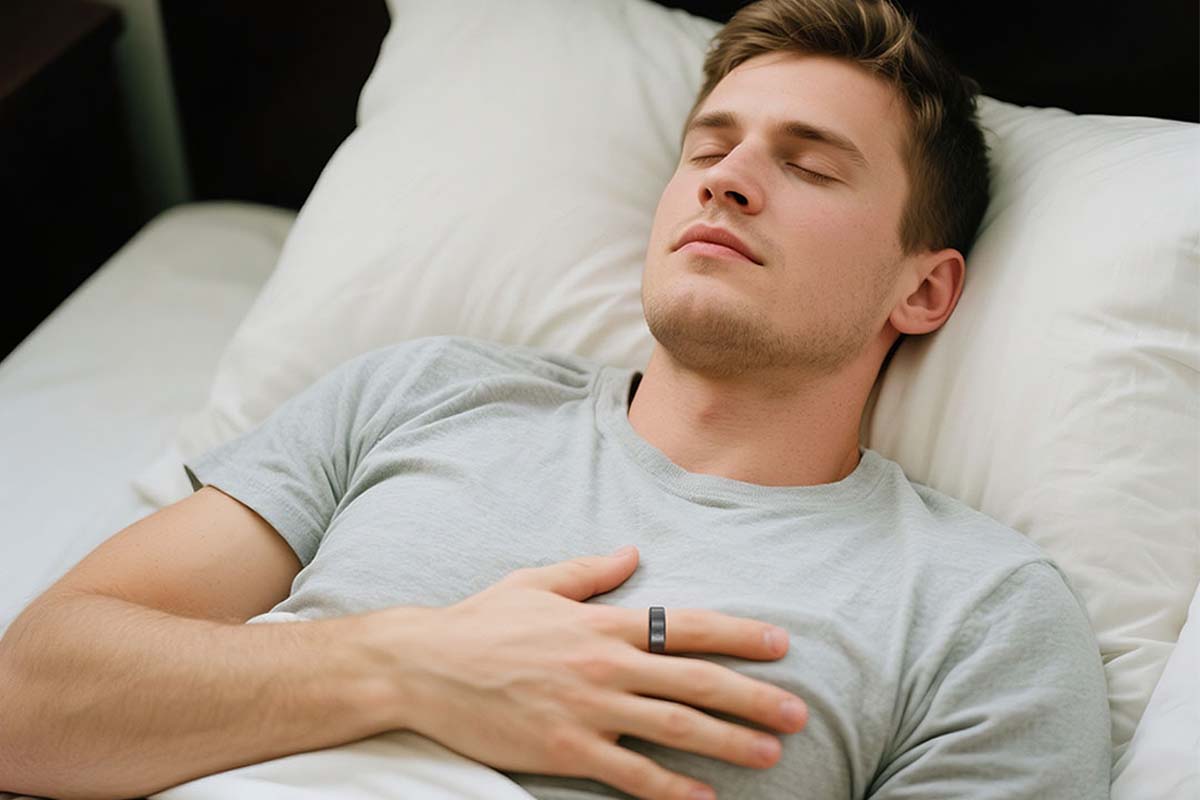
This is where J-STYLE’s JCRing Med X3 Smart Health Ring offers a breakthrough. As a new-generation wearable, it combines ultra-lightweight design, all-night comfort, and medical-grade biometric tracking to deliver continuous, accurate, and unobtrusive home sleep monitoring. Crucially, it also provides a preliminary risk assessment for sleep apnea—without requiring bulky chest straps, intrusive nasal sensors, or overnight sleep clinic visits.
2. How Does the JCRing Smart Ring Monitor Sleep? – Core Technology Breakdown
Unlike traditional wrist-based wearables, the JCRing Med X3 Smart Ring is designed to sit on the finger—a location with richer capillary blood flow and minimal motion artifacts during sleep. This anatomical advantage enables higher precision in optical sensing, making it ideal for nighttime use.
Key Technologies in JCRing Sleep Monitoring:
Multi-wavelength PPG Sensors
● Uses infrared and red LEDs to penetrate the skin and measure changes in blood volume, enabling accurate heart rate and SpO₂ tracking even at night.
● Optimized for low power consumption, ensuring the ring can operate for 7–10 days per charge.
3-Axis Accelerometer & Gyroscope
● Captures micro-movements during sleep to determine sleep stages (light, deep, REM) and total sleep time.
● Detects tossing, turning, and restlessness to evaluate sleep efficiency.
HRV (Heart Rate Variability) Analysis
Skin Temperature Tracking
Data Fusion Algorithms
Why This Matters:
Finger-based PPG readings tend to be more accurate than wrist readings during sleep due to reduced motion noise and better vascular access. This means more reliable data for detecting abnormal breathing patterns.
3. How the JCRing Med X3 Assesses Sleep Apnea Risk
3.1 What Is Obstructive Sleep Apnea (OSA) and Why Is It Dangerous?
OSA affects an estimated 936 million adults worldwide (Lancet Respiratory Medicine, 2019). It occurs when the airway collapses or becomes blocked during sleep, leading to repeated pauses in breathing—sometimes hundreds of times a night.
Consequences of untreated OSA:
● Daytime fatigue, memory issues, and mood disturbances
● Hypertension, arrhythmias, and heart failure
● Increased risk of type 2 diabetes and metabolic syndrome
● Higher accident risk due to drowsiness
3.2 How a Smart Ring Can Evaluate OSA Risk
The JCRing X3 uses a multi-parameter analysis approach:
● Blood Oxygen Desaturation Index (ODI): Detects how many times per hour oxygen saturation drops below a threshold (e.g., 90%).
● Breathing Pattern Stability: Identifies irregularities in pulse waveforms linked to disrupted airflow.
● HRV Response: Measures autonomic reactions to oxygen drops.
● Movement Correlation: Aligns breathing irregularities with sleep position changes.
These metrics are analyzed by an AI-powered cloud algorithm, producing a Sleep Apnea Risk Score. While not a medical diagnosis, it provides actionable early warnings to prompt further clinical testing.
3.3 Advantages of JCRing X3 for OSA Risk Assessment
No bulky masks or chest straps
● Comfortable enough for nightly use
● Continuous data collection across multiple nights, improving detection reliability
● Discreet form factor—resembles a stylish piece of jewelry
● Data integration with health apps and clinician portals
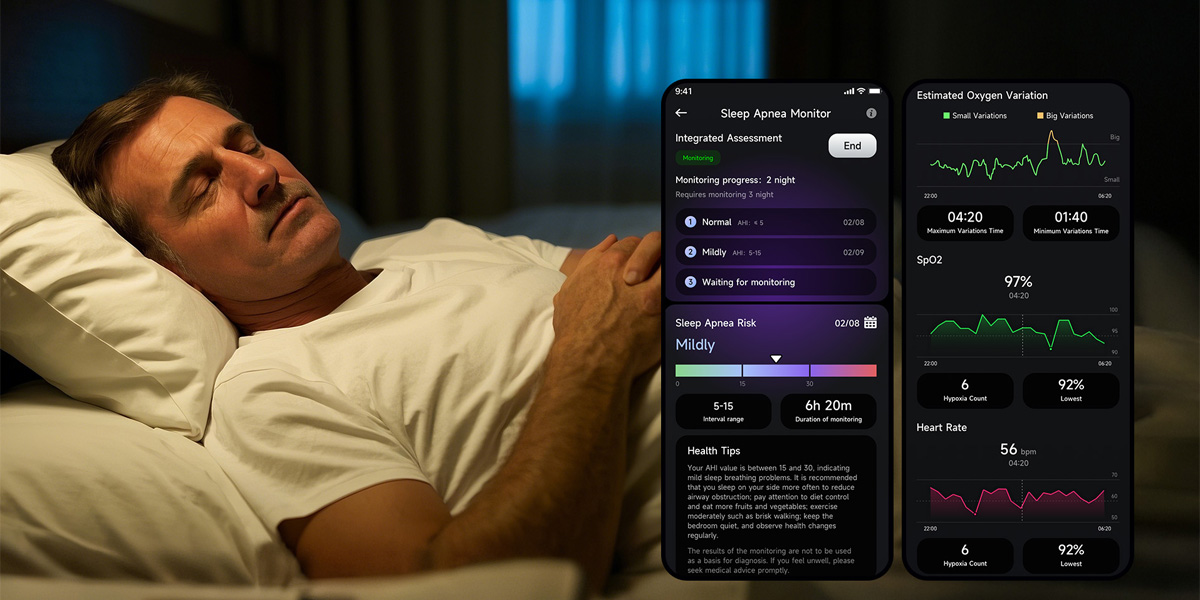
4. Smart Ring vs. Traditional Wristbands/Watches for Sleep Tracking
| Feature | Smart Ring | Smartwatch / Fitness Band |
| Comfort During Sleep | ✅ Very high | ❌ Often uncomfortable |
| Sensor Accuracy at Night | ✅ Higher (finger PPG) | ⚠️ Prone to motion artifacts |
| Battery Life | ✅ 7–10 days | ❌ Often 1–3 days |
| User Compliance | ✅ High | ❌ Many remove before sleep |
| Design Appeal | ✅ Discreet & stylish | ⚠️ Bulky for sleep use |
Conclusion:For long-term, consistent nighttime monitoring—especially for sleep apnea risk—smart rings offer a clear ergonomic and accuracy advantage.
5. Market Outlook for Sleep Monitoring Smart Rings
According to Grand View Research, the global sleep tech devices market is expected to reach USD 49.9 billion by 2030, with wearables as the fastest-growing segment. The demand is fueled by:
● Rising awareness of OSA and other sleep disorders
● Increased preference for non-invasive home health monitoring
● Integration with telehealth and remote patient monitoring platforms
B2B Opportunity:
Smart rings like JCRing X3 present significant opportunities for healthcare providers, wellness brands, and insurance companies looking to integrate continuous sleep monitoring into their service offerings.

6. How to Choose a Smart Ring for Sleep & OSA Monitoring
For B2C Buyers:
● Look for medical-grade SpO₂ accuracy
● Check battery life (minimum 5–7 days recommended)
● Ensure comfortable sizing and hypoallergenic materials
● Review app features and data visualization quality
For B2B Buyers:
● Verify API/SDK availability for integration with health platforms
● Request custom branding (OEM/ODM) options
● Evaluate data security compliance (e.g., HIPAA, GDPR)
● Consider bulk pricing and long-term firmware support
7. Important Note: Correctly Interpreting Smart Ring Data
A smart ring is a screening and wellness tool, not a substitute for a medical diagnosis. If your device reports low oxygen saturation or high OSA risk:
● Do not panic—results can be influenced by temporary factors like nasal congestion or poor fit.
● Consult a healthcare professional for formal sleep testing.
● Use trends over multiple nights rather than a single-night reading.
8. Final Thoughts
The JCRing Med X3 Smart Health Ring bridges the gap between comfort, accuracy, and actionable health insights. By making sleep tracking unobtrusive and enabling early detection of breathing disorders, it empowers users to take proactive steps toward better health—without compromising their rest.
Whether for individual wellness tracking or enterprise-level remote patient monitoring, smart rings are redefining what’s possible in sleep technology.
